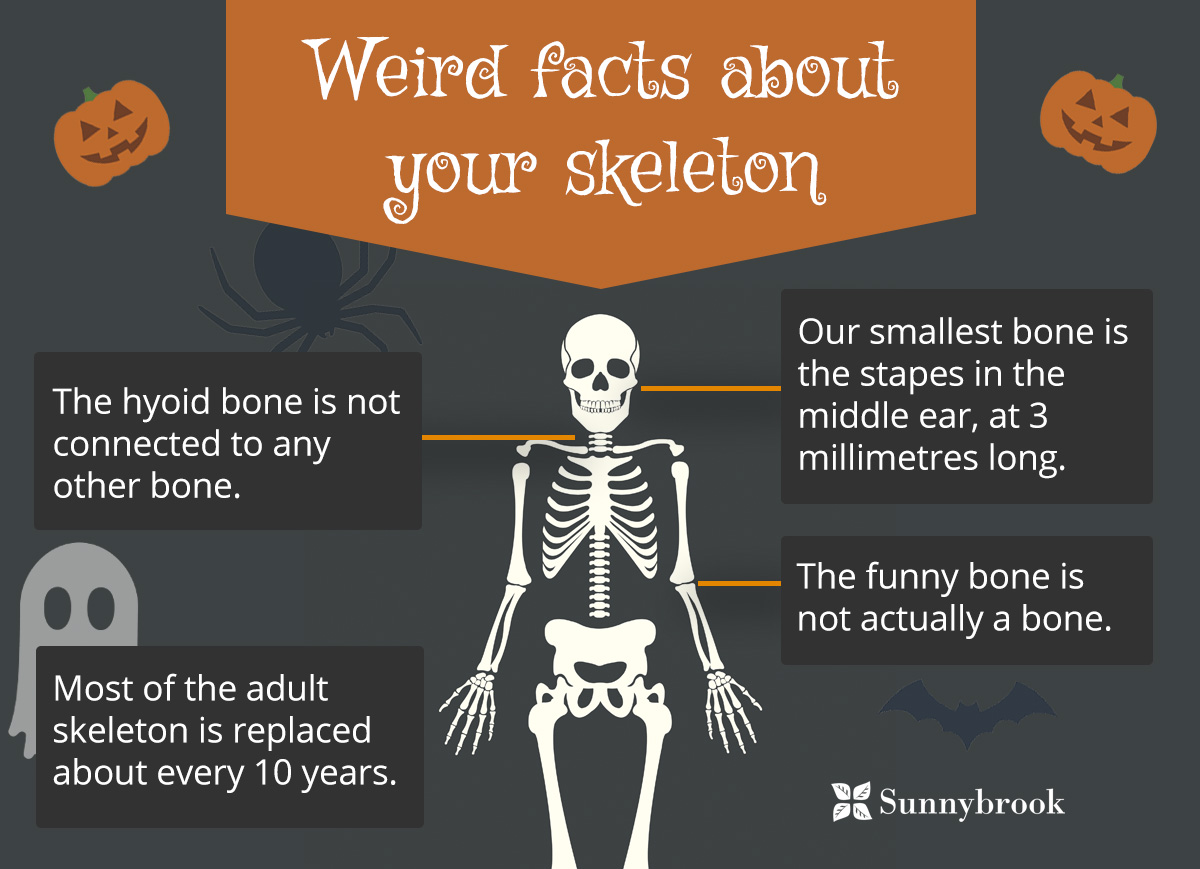A skeleton isn’t scary. We would be a formless, jiggly mass without one. In fact, the skeleton and adjoining muscles and cartilage provides us with a clever and highly functional design, says Dr. John Murnaghan, orthopaedic surgeon of the Holland Musculoskeletal Program and surgeon educator in the University of Toronto’s Department of Surgery. “Our skeletal system shapes us, keeps us upright and mobile, and protects the heart, brain and other vital organs,” says Dr. Murnaghan.
Clever design is also behind these ‘bizarre bone facts’:
A new ‘inner you’… in about ten years
In adults, every year about ten percent of bone is replaced. That means as the mineral content in your bones is renewed, we get a new skeleton about every ten years. Remodeling, or the removal of bone and its replacement to the same site, is a lifelong cellular activity that occurs in our bones. Mature bone is broken down by osteoclasts and replaced by osteoblasts that secrete new bone.
A floating bone?
The hyoid bone in the middle of the front of your neck is not directly connected to any other bone. Within the skeleton, it seems to ‘hover’ just below the chin. In reality, this u-shaped bone is suspended by a complex network of muscles, and sits centrally at the root of the tongue, between the lower jaw and the large cartilage of the larynx. The hyoid anchors the tongue, helps us chew and swallow, and plays a role in voice articulation.
‘Phantom’ bones
Babies are born with 300 bone forming centres. By adulthood, we only have 206 bones or a reduction of about a third of our bones. That’s because as we grow, many bone forming centres fuse together, especially in the skull. Some bones in babies are actually cartilage that eventually mature into bone.
The funny bone is neither
The “funny bone” is not a bone at all. The tingly zap we experience when we bump the inside of the elbow is actually caused by irritation of the ulnar nerve. This nerve starts from a network of nerves in the neck and courses through the shoulder and upper arm closest to the body. It’s a tight squeeze at the elbow where it passes very close to the humerus with little padding. From the inside of the elbow the nerve goes into the hand and fingers which explains why the zap often radiates into the forearm, hand and fingers.
About half the size of an earwig
The smallest bone in the human body is the stapes in the middle ear. Resembling a stirrup on a saddle, the stapes bone is only 3 millimetres long. Working in tandem with the malleus and incus ear bones, the stapes bone helps transmit vibrations picked up by the eardrum to the inner ear, resulting in signals sent to the brain that create sounds.








